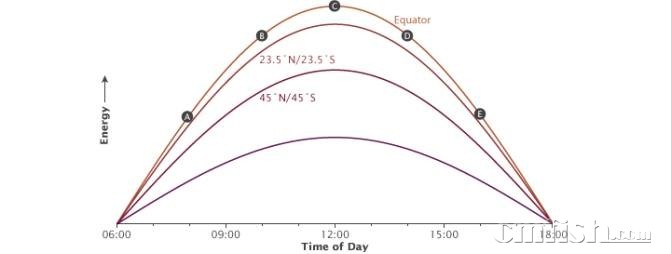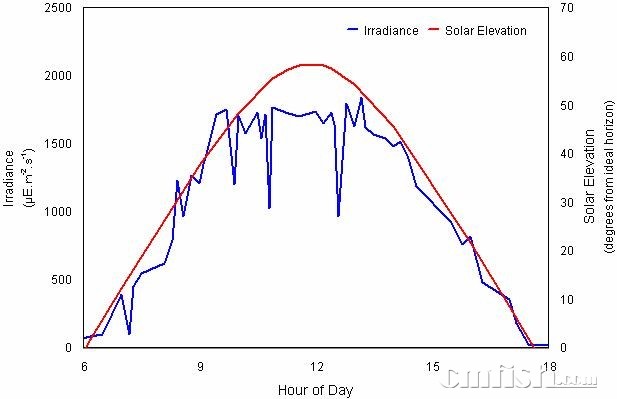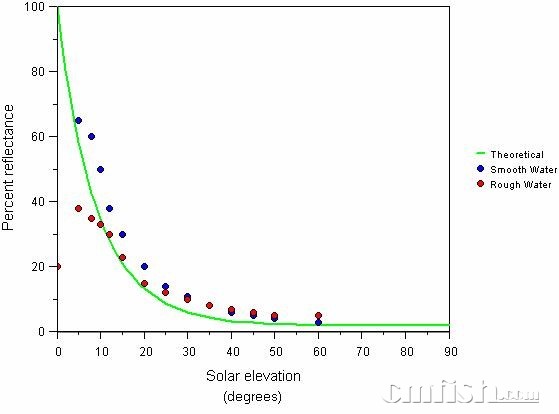|
|

楼主 |
发表于 2015-4-20 17:57:19
|
显示全部楼层
来自: 中国北京
本帖最后由 mynameismo 于 2015-4-20 18:00 编辑
六、LED的优势(2)
Advantage #2: Extended life cycle
优点2:使用寿命长
As a solid-state light source, a light emitting diode does not have quickly wearing parts, such as an incandescent filament. When operated at or below rated current, and providing that they do not overheat, high quality LEDs degrade very slowly. But LEDs too have their specific needs which have to be considered when designing a fixture.
相较白炽丝,LED元件不会迅速损坏。在正不高于额定电流状态下工作时LED不会过热,高品质的LED的降解速度很慢。但是设计LED灯具时也需考虑的其特定需求。
Lifespan of the best LEDs available in the market today (Cree XT-E, LUXEON Rebel ES) is indeed very high, if sufficient heat removal and properly conditioned power are provided. Of course, these are new LEDs and their operation have been tested for tens of years, but using complex models their life term and luminosity drop in that period can be estimated. We shall refer to two types of such forecasts: based on Cree's model (which we call the "worst case scenario" or "pessimistic model"), and in parenthesis we provide figures based on the Philips model for their LUXEON Rebel ES (which we call the "optimistic model"). If all the required operation conditions are fulfilled, we will still be getting about 70% of LED's initial radiation power after 40 (150) thousand hours of operation. These figures translate to 10 (33) years of operation of a light fixture, providing 12 hours of operation daily! After this period the LEDs will continue to lose luminance, reaching about 50% of the initial value after 100 (200) thousand hours!
现在市场最好的LED品牌(Cree XT-E, LUXEON Rebel ES)灯的寿命是非常高的,如果提供足够的散热和正常功率。虽然,这些新型LED需要数十年的时间进行功能测试,但通过复杂的模型我们可以估算生命期限和光衰情况。我们参照两种模型:基于Cree公司的模型(我们称之为“最坏的情况”或“悲观模式”);与其相对,我们提供了基于飞利浦型号为LUXEON Rebel ES的数据(我们所谓的“乐观模式”)。如果所有必要条件得到满足,我们在最坏情况下在40,000小时(乐观模式下是150,000小时)得到全新LED约70%的光发射功率。这些数字可以转化为10年(33年)的灯具使用寿命(以每天提供12小时照明来计算)。此后的LED将持续光衰。据估计100,000小时后(乐观模式:200,000小时)光强为最初的约50%!
The probability of a single LED failure on a fixture is quite low, about 1% during the period of 50 thousand hours of operation, and after this period the probability increases to 50% by 200 thousand hours. Several LEDs in a light fixture are usually connected in series, and therefore, if one LED dies, the whole string will be effected. If we look at these figures statistically, is likely that for a fixture with about 200 LEDs this can happen in 10 years. However a LED's death is a probabilistic event and it can happen that a particular light emitting diode may get "fried" during the very first hours of its life. In practice, if the conditions are good, lifespan of modern LEDs is quite long.
单个LED发生故障的概率是相当低的,在5万小时内故障率约为1%,并在此之后的故障率会增大:200万小时以上会达到50%。LED灯通常会有多个LED灯珠串联在一起,因此,如果一个LED灯珠坏了,整个串连电路将受影响。利用概率统计学分析,一盏大约有200 颗灯珠的LED灯其发生灯珠损坏的可能性为10年。当然,一个LED灯珠损坏是一个概率事件,某些发光二极管也存在刚出厂就“挂彩”的情况。实际上,如果条件得当,现代的LED的寿命是很长的。
In comparison, conventional fluorescent tubes need to be replaced once every four to six months. Based on our worst case scenario, it means that they will have to be replaced at least 20 times during the lifetime of a LED fixture. Providing that the cost of specialized tubes for reef lighting can be quite high, a LED fixture can provide significant savings; e.g., not only monetary, but also of the time that was to be spent for acquisition and replacement of light bulbs.
相比较而言,传统的荧光灯管需要每四到六个月更换一次。而即使在最坏的情况下,LED灯能长时间不用更换,时间是传统荧光灯的20倍。考虑到专业的礁岩缸照明成本是相当高的,一个LED灯具能提供显著的节省空间:不仅对于LED装置本身,也体现在灯泡的更换成本。
Let us try to calculate the possible savings from using a LED fixture. A 300W LED fixture can replace a 900W T5 fixture used on a 160 gallon SPS reef tank. In 10 years the LED fixture will save ((900-300)/1000)*12*365*10=26280KWh of electric power. The cost of electricity depends on where you live, how much you use, and possibly when you use it and the rates from the same provider can range from 12c to 50c per kWh [17]. For our estimate we shall use a sample rate of 15c per kWh, which is a reasonable example (you can find out how much you are actually paying for electric power by looking at your bill). Based on the 15c per KWH example, the fixture will save you $3942 in power alone. If we take the average cost of a specialized 80W T5 bulb to be around $25, we shall additionally save $25*10*20=$5000 in bulb replacements. Your total savings in 10 years will be about $8942. This is a "best scenario" estimate and we did not consider many additional expenses - for example, the cost of an aquarium chiller to remove the excessive heat from the tanks, as well as energy costs related to its operation. Besides, there are non-monetary values - such as the comfort of not having to provide maintenance on a light fixture in 10 years! Thus far, direct savings during the operational period are quite a few times higher than the cost of even most expensive LED fixture. In other words, not only you are getting it free, but it will even bring you some profit in its lifetime!
让我们考虑使用LED灯能节省多少钱。对于160加仑SPS水族箱来说,使用300W的LED灯具可以取代900W T5灯。在10年的LED灯具将节省((900-300)/1000)*12*365*10=26280千瓦时的电力。电力成本取决于你住在哪里,你每天使用多少,并在什么时候使用它,对于同一供电商电费可能在每千瓦时12美分到50美分间变化。我们假设电费为每千瓦时为15美分(你可以通过看你的电费单知道每度电多少钱)。假设每度电15美分,LED灯将为您节省3942美元的电费。如果我们假设一个专用的80W T5灯泡的平均成本是25美元左右,我们将额外节省25 * 10 * 20 = 5000美元的灯泡更换费。你将在10年内节省大约8942美元。这是一个“保守情况”估计,我们没有考虑很多额外的开支 - 例如,水冷的成本以及水冷的电费成本。此外,还有非货币价值 - 比如10年内不用担心灯具维修问题!这能省下甚至比最昂贵的LED灯还多的钱。换言之,不仅你能省下钱,它甚至会为你带来一些利润!
Advantage #3: Ability to adjust illumination and spectrum
优点3:具有调节光谱和光强的性能
When using dimmable drivers, the light emitted by LEDs can be easily adjusted. Aquarists often use special controllers to imitate sunrises and sunsets, similar to natural illumination changes during the day. It is important to note, however, that sunsets and sunrises in the equatorial zone are much quicker compared with higher latitudes, and daytime is equal to night (i.e. there is always a 12 hour photoperiod). Look at the diagram shown in Fig. 12 [20]:
利用可调光驱动器,我们可以很容易地调节LED发光状态。鱼友们经常会使用特殊的控制器模仿日出和日落,类似于白天自然光照的变化。然而要注意的是,日落和日出在赤道区域较高纬度相比要快得多,并且白天的时间等于夜晚(即总共有12个小时的光照周期)。见图12[20]:

Fig. 12 The illustration shows how the time of day (A-E) affects the angle of incoming sunlight. Image courtesy of NASA Earth Observatory
图12 展示不同纬度地区不同时段内光照情况(图片由NASA Earth Observatory提供)
Real irradiance at the surface depends on multiple factors, such as cloudiness, the amount of water vapors in the air, atmospheric turbulence, etc. The insolation measured at the Great Barrier Reef on a typical day is shown in Fig. 13[21].
在物体表面,实际接受到的辐照度取决于多种因素,如混浊的水蒸汽在空气中的量,大气湍流等。图13[21]展示了在大堡礁在典型的一天测量到的日照辐射情况

Fig. 13 Irradiance and solar elevation for September 2, 1998 at One Tree Island, Great Barrier Reef (23°30'S, 152°06'E) (Image courtesy of A. Salih, unpublished data)
太阳辐射强度与日升角度的关系,1998.9.2,大堡礁数据(A. Salih, unpublished提供数据)
Also note that the light is almost fully reflected when the sun rays touch the water surface at small angles. Reflection also depends on the wind speed. These dependences are illustrated by the diagram in Fig. 14 [21].
此外,当太阳入射角度很小时,光线几乎都被水面反射掉了。并且反射程度还受到风速的影响。下图展示了上述因素对光强的影响。见图14

Fig. 14 Reflectance of sunlight in relation to solar radiation. Theoretical and measured percentage of sunlight reflected off a completely smooth water surface in relation to solar elevation (based on calculations of Weinberg, 1976; Grichenko in Weinberg, 1976)
图14,随入射角变化时,反射光相当于入射光线的光强百分比。绿线为理论值,蓝点为平静的水面,红点为波涛汹涌的水面。(数据来源Weinberg, 1976; Grichenko in Weinberg, 1976)
This means that natural illumination under water is not sufficient for photosynthesis until the sun rises approximately 15 degrees over the horizon. In approximately 30 minutes after this the illumination quickly increases to about half of the daily maximum value. Therefore actual photoperiod is about 9 hours. These are the factors an aquarist should consider if he is wishing to replicate natural light cycles.
这意味着,直到太阳在地平线上上升大约15度时,在水中的自然光照才足以用于光合作用,。在此之后,经历大约30分钟的快速上升阶段并达到每日最大值的一半。因此如果希望复制自然光的周期,水族箱中的实际光周期为约9小时。
|
|
 |小黑屋|手机版|Archiver|CMF海水观赏鱼网
( 琼ICP备12003277号 )
|小黑屋|手机版|Archiver|CMF海水观赏鱼网
( 琼ICP备12003277号 )